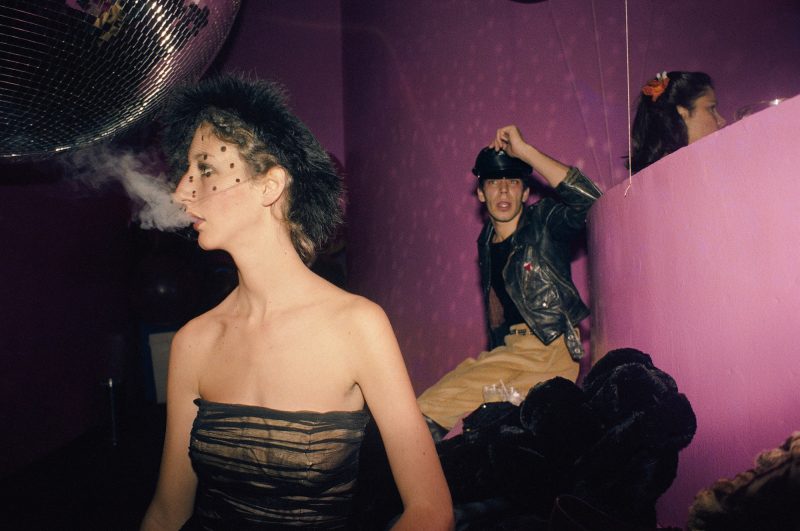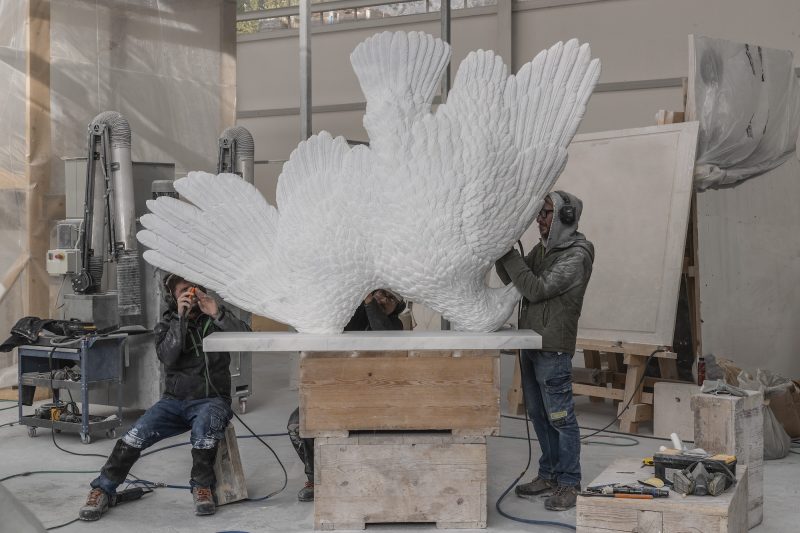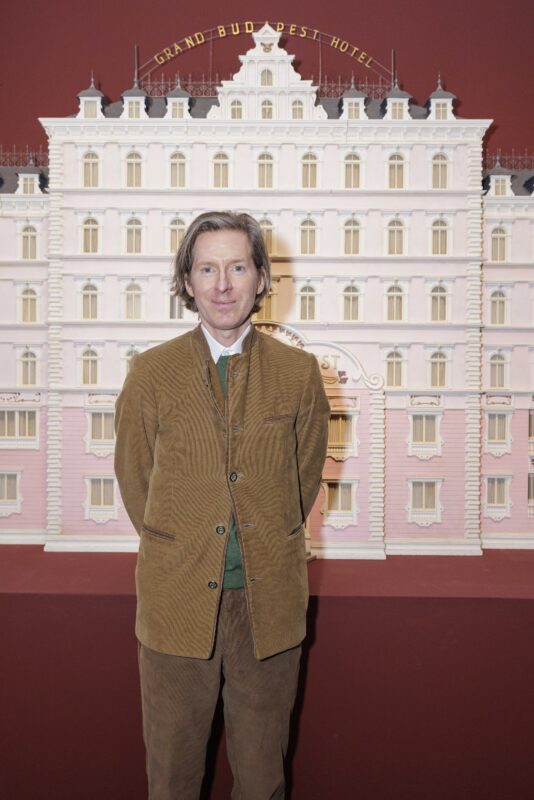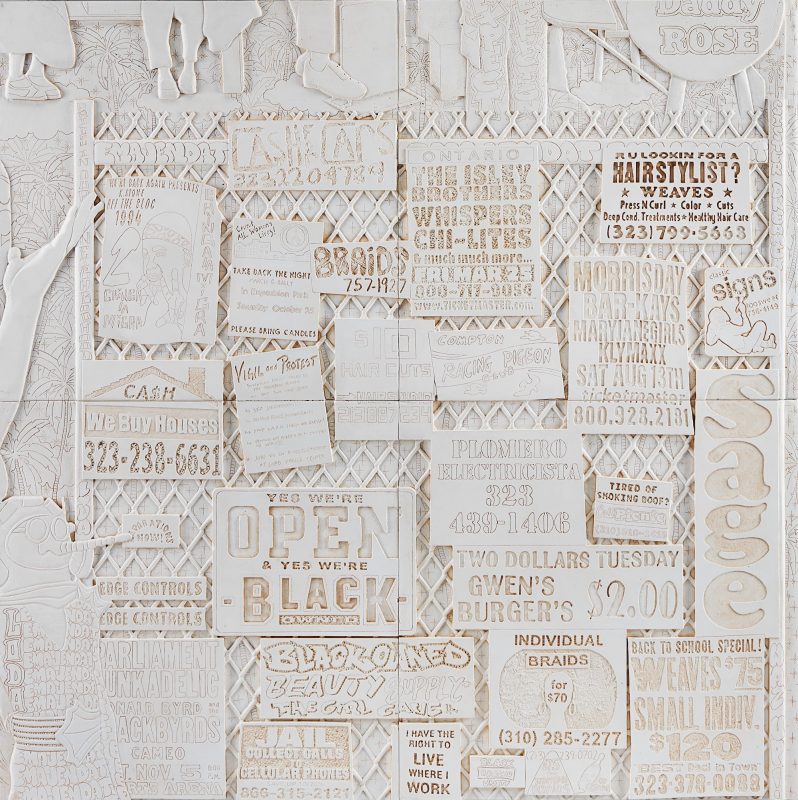Gagosian has announced an exhibition of new work by Nathaniel Mary Quinn, opening in Paris at 4 rue de Ponthieu.
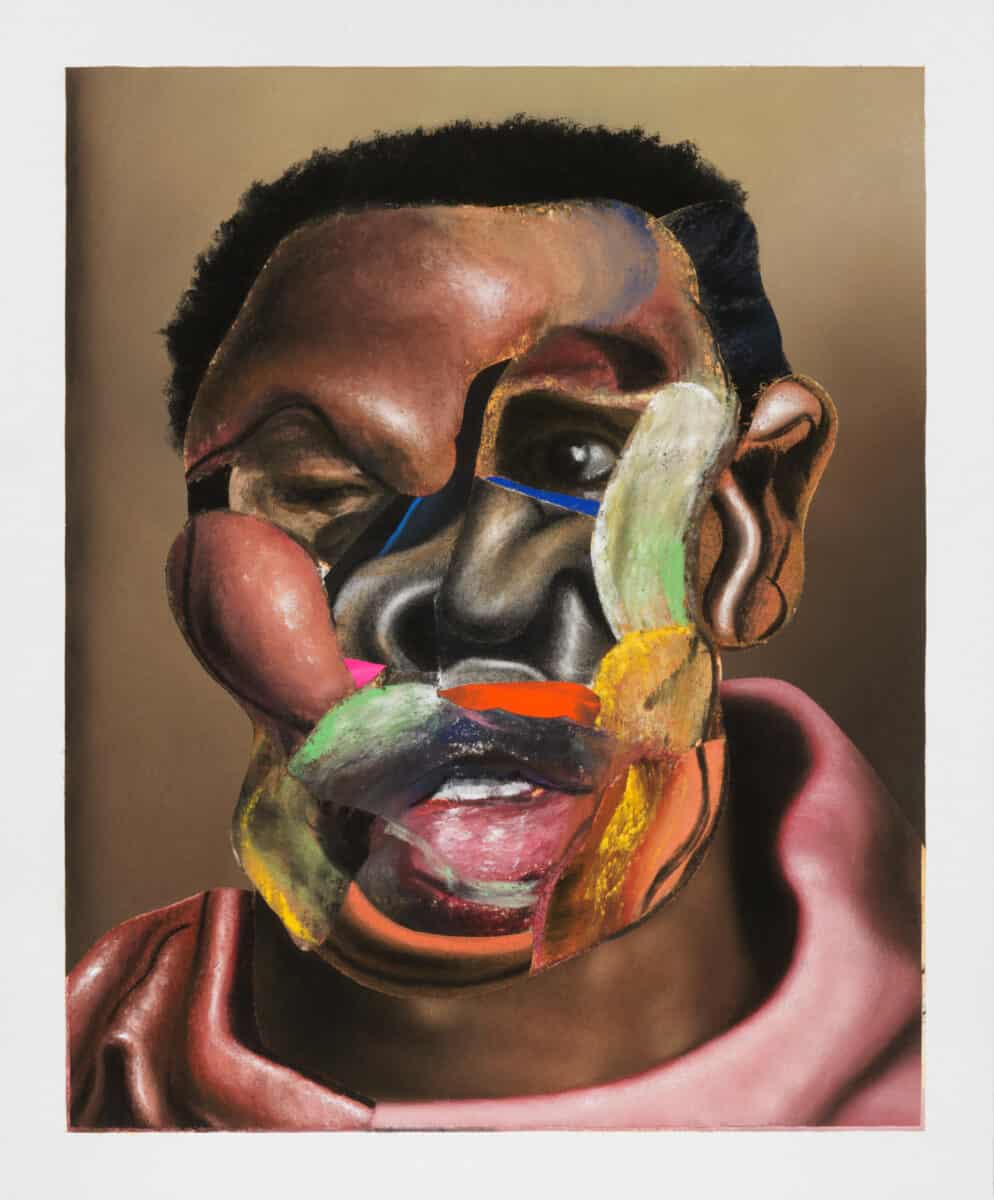
In this, his first solo exhibition in Paris, Quinn explores the construction of memory and perception with reference to his personal and familial history, as well as to art historical influences including Giovanni Battista Moroni, Rembrandt, and Francis Bacon. He also draws on psychotherapist Suzanne Imes’s elaboration of Gestalt theory and philosopher Gaston Bachelard’s unique approach to the psychic resonance of physical space. Working without preliminary sketches, Quinn produces composite portraits in oil paint, paint stick, oil pastel, charcoal, gouache, and soft pastel that simulate the appearance of torn-paper collage. These hybrid faces and figures are neo-Dadaist in their fractured appearance, yet realist in their carefully painted details and overall psychological effect. Focusing on the multifaceted nature of the subconscious mind, Quinn relates key episodes and individuals from his past to larger psychosocial concerns.
Making use of Imes’s conception of Gestalt as a tool for understanding the self as inherently multipartite and mercurial, and for navigating the gap between internalized selfhood’s contradictions and the imperative to present an outwardly coherent image, Quinn has assembled real memories and imagined episodes into new works including Study for Invader (2023). This portrait of the individual who broke into his mother’s public-housing apartment in Chicago’s South Side—reportedly to recover money after selling drugs on credit to his eldest brother—marks the beginning of a body of work dedicated to exploring long-accepted familial narratives absorbed by Quinn in the form of unreliable testimony (“If, for example, you’ve never met your dad and your mom tells you his story,” he explains, “you construct an account based on what she says. The exhibition is based on that idea.”). Intruder (2023) also pictures the unidentified dealer, who was ultimately responsible for his mother’s demise, when Quinn was still in high school.
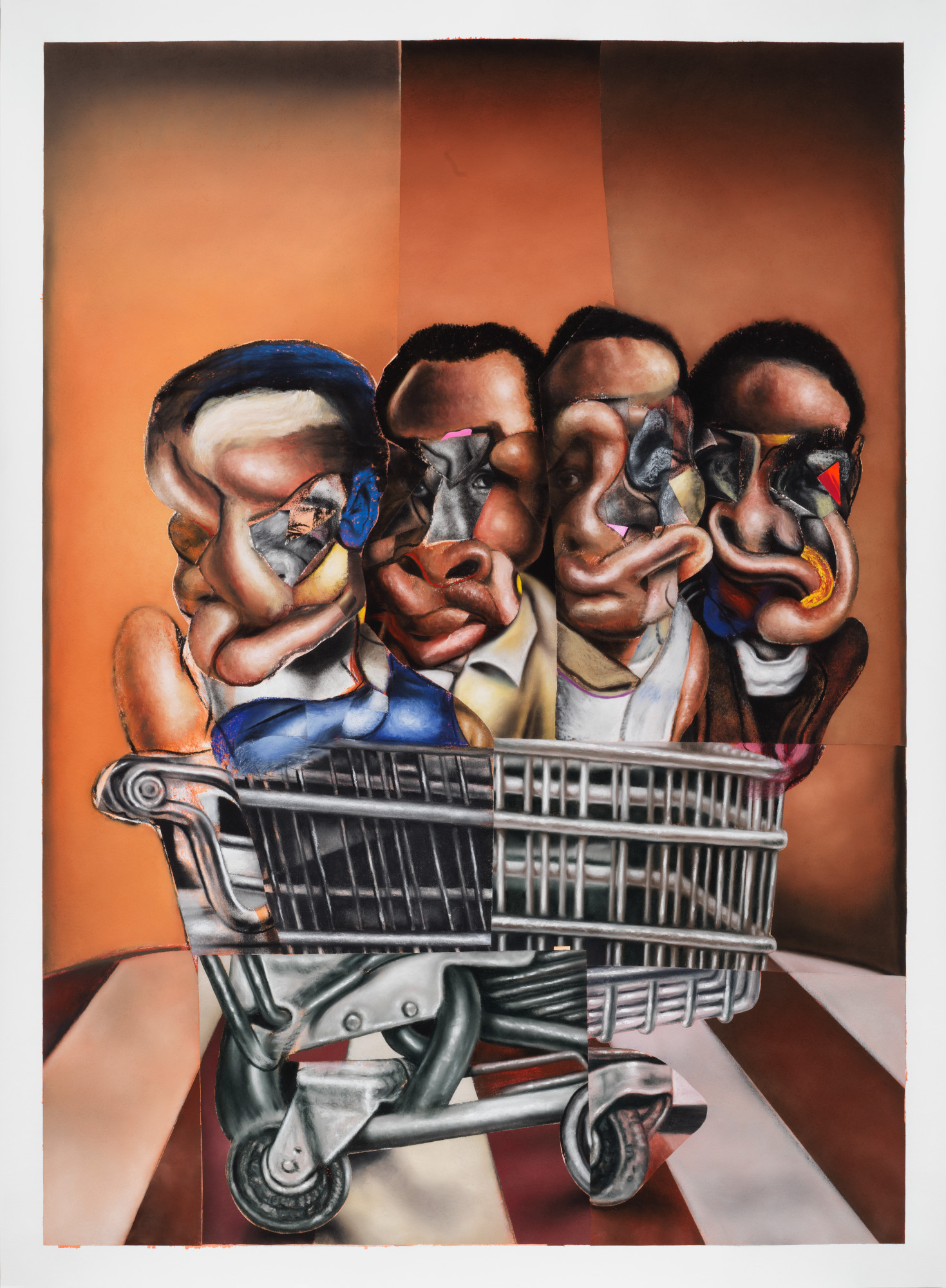
Quinn felt empowered to respond further to memories and emotional responses centered on his mother’s apartment by Bachelard’s influential text The Poetics of Space (1958). Thinking about the features and contents of the property and the tenement complex to which it belonged—particularly a latticework metal grille that veils the building’s façade—he explores some of the ways in which such sites are inevitably and indelibly suffused with personal association by incorporating visually distinctive elements of their structures into works such as The Break-In/Apt. #604 (2023). In another work, Super Jet (2023), which depicts the artist’s four older brothers in a shopping cart, he draws on memories of the eponymous grocery store from which his mother sometimes bought food. An unusually playful image, it reflects an all-too-rare moment of fraternal lightheartedness in a childhood marked by hardship. In this exhibition, Quinn again confronts viewers with striking images that consider the often discordant constituents of individual identity through the conjoined lenses of subjective experience and shared cultural history.
NATHANIEL MARY QUINN, The Forging Years, Opening reception: Thursday, June 8th, 6–8 pm
June 8th–July 29th, 2023, Gagosian, 4 rue de Ponthieu, Paris
About the artist
Nathaniel Mary Quinn was born in Chicago in 1977 and lives and works in New York. Collections include the Brooklyn Museum, New York; Studio Museum in Harlem, New York; Whitney Museum of American Art, New York; Hirshhorn Museum and Sculpture Garden, Washington, DC; Institute of Contemporary Art, Miami; Pérez Art Museum Miami; Crystal Bridges Museum of American Art, Bentonville, Arkansas; Art Institute of Chicago; Sheldon Museum of Art, Lincoln, Nebraska; Denver Art Museum; The Broad, Los Angeles; Hammer Museum, Los Angeles; Los Angeles County Museum of Art; Museum of Contemporary Art, Los Angeles; San Francisco Museum of Modern Art; and Museo Jumex, Mexico City. Exhibitions include the Museum of Contemporary African Diasporan Arts, New York (2015); This is Life, Madison Museum of Contemporary Art, Wisconsin (2018–19); and Le Consortium, Dijon, France (2022).
